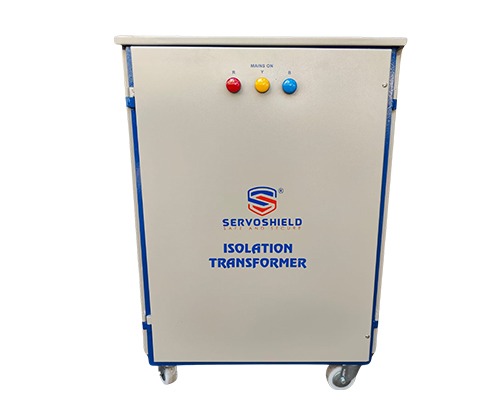An isolation transformer is an important electrical device used to isolate a circuit or equipment from the power source. It provides electrical isolation between the input and output of the transformer, thereby preventing any direct electrical connection between the two circuits. This isolation not only protects the equipment from electrical disturbances but also ensures the safety of the users.
Isolation transformers are widely used in various industries, including healthcare, telecommunications, and manufacturing. They are also used in households to power sensitive electronic devices like computers, televisions, and home appliances. The primary purpose of an isolation transformer is to provide galvanic isolation between the input and output circuits, which means there is no direct physical or electrical connection between the two. It works by transforming the voltage from one level to another while maintaining electrical isolation.
One of the main benefits of an isolation transformer is its ability to protect equipment from electrical surges and spikes. Electrical surges can occur due to lightning strikes, power outages, or faulty wiring. These surges can damage sensitive electronic components and cause malfunctions or even complete failure of the equipment. An isolation transformer acts as a barrier against these surges, preventing them from reaching the equipment and ensuring its safe operation.
Another advantage of using an isolation transformer is its ability to reduce electromagnetic interference (EMI). EMI is a disturbance that can affect the performance of electronic devices by interfering with the signals they receive. This interference can be caused by nearby electrical equipment, power lines, or even radio waves. An isolation transformer can significantly reduce EMI by isolating the equipment from its power source, making it an essential component in industries where precise and accurate signals are crucial
Moreover, isolation transformers also provide protection against ground faults. Ground faults occur when a live wire comes into contact with a grounded surface, causing an imbalance in the electrical system. This can lead to electric shocks, equipment damage, and even fire hazards. An isolation transformer breaks the ground loop and prevents any current flow through the ground, thus protecting the equipment and ensuring the safety of the users.
Apart from providing safety and protection, isolation transformers have other benefits as well. They can improve the overall performance and efficiency of electrical systems. By isolating the equipment from the power source, the transformer reduces the chances of voltage drops and fluctuations, ensuring a constant and stable power supply. This stability can improve the performance of sensitive equipment and prevent any unexpected shutdowns or malfunctions.
In addition to the above benefits, isolation transformers also offer cost savings in the long run. By protecting equipment from electrical surges, EMI, and ground faults, the transformer reduces the risk of equipment damage and downtime, saving the company from costly repairs and replacements. Moreover, the improved efficiency of electrical systems can also result in energy savings, reducing operating costs for businesses and households.


